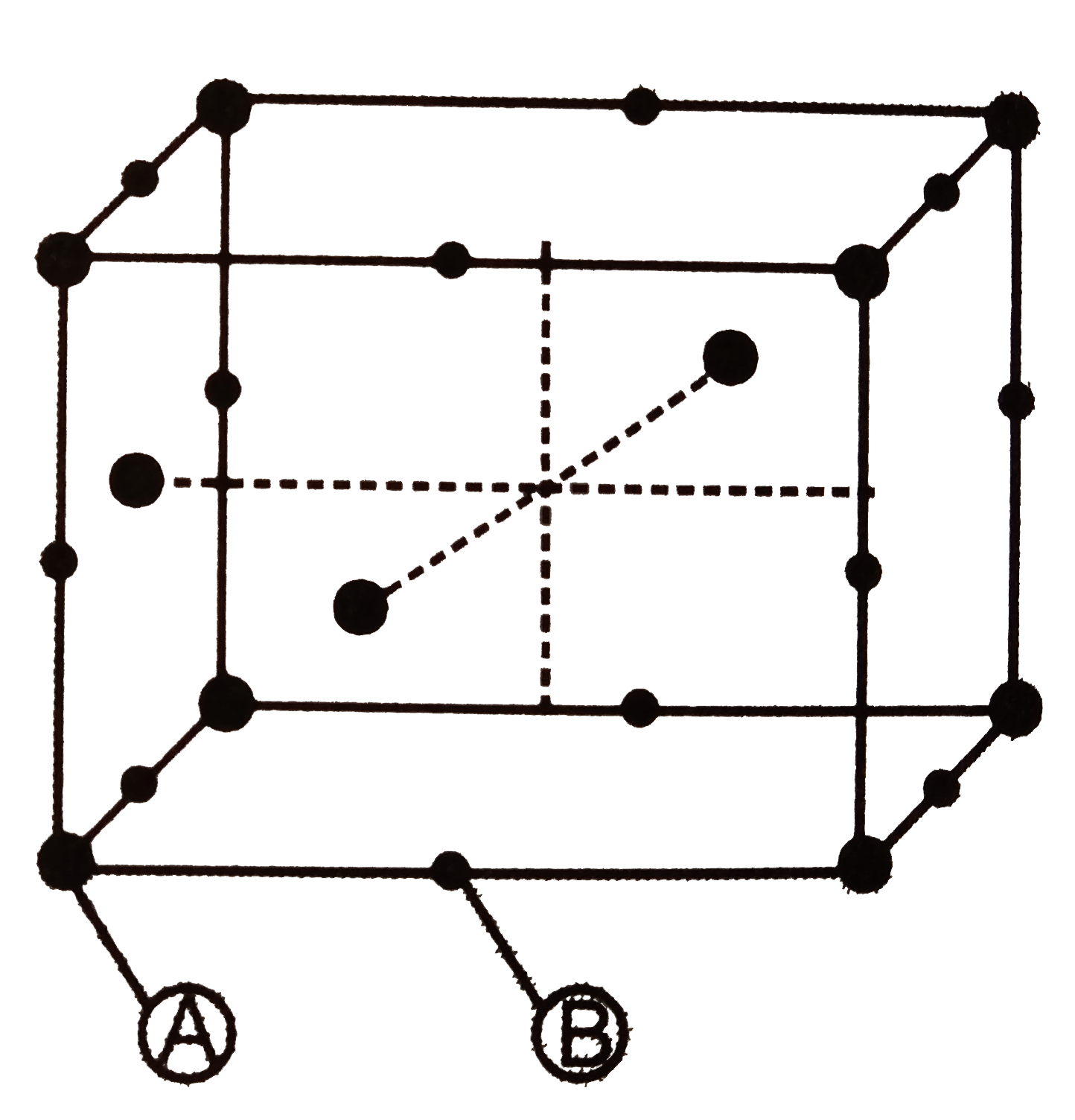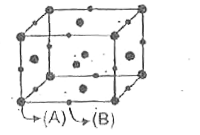In the fluorite structure, the coordination number of cation is:
4
6
8
3
The correct Answer is:C
To determine the coordination number of cations in the fluorite structure (specifically in CaF2), we can follow these steps:
Step 1: Understand the Structure
The fluorite structure is characterized by the arrangement of cations (Ca²⁺) and anions (F⁻). In this structure, the calcium ions are larger than the fluoride ions.
Hint: Familiarize yourself with the basic structure of fluorite, which consists of cations and anions arranged in a specific geometric pattern.
Step 2: Identify the Coordination Number
The coordination number refers to the number of nearest neighbor ions surrounding a central ion. For cations in the fluorite structure, we need to determine how many fluoride ions surround each calcium ion.
Hint: Coordination number can be visualized as how many ions are directly adjacent to a central ion.
Step 3: Analyze the Arrangement
In the fluorite structure, the Ca²⁺ ions occupy the face-centered cubic (FCC) lattice positions. The F⁻ ions occupy all the tetrahedral voids within this FCC lattice.
Hint: Remember that in FCC, each corner atom is shared among 8 unit cells, and face-centered atoms are shared between 2 unit cells.
Step 4: Count the Nearest Neighbors
For each Ca²⁺ ion located at the corners and face centers of the FCC lattice, it is surrounded by F⁻ ions located in the tetrahedral voids. Each Ca²⁺ ion has 8 F⁻ ions as its nearest neighbors.
Hint: Visualize the geometry; tetrahedral voids are positioned such that they can be surrounded by four ions, but in the case of Ca²⁺, it effectively touches 8 F⁻ ions due to the arrangement.
Step 5: Conclusion
Thus, the coordination number of the cation (Ca²⁺) in the fluorite structure is 8.
Final Answer: The coordination number of cation (Ca²⁺) in the fluorite structure is 8.
---
The fluorite structure is characterized by the arrangement of cations (Ca²⁺) and anions (F⁻). In this structure, the calcium ions are larger than the fluoride ions.
The coordination number refers to the number of nearest neighbor ions surrounding a central ion. For cations in the fluorite structure, we need to determine how many fluoride ions surround each calcium ion.
In the fluorite structure, the Ca²⁺ ions occupy the face-centered cubic (FCC) lattice positions. The F⁻ ions occupy all the tetrahedral voids within this FCC lattice.
For each Ca²⁺ ion located at the corners and face centers of the FCC lattice, it is surrounded by F⁻ ions located in the tetrahedral voids. Each Ca²⁺ ion has 8 F⁻ ions as its nearest neighbors.
Thus, the coordination number of the cation (Ca²⁺) in the fluorite structure is 8.
Similar Questions
In calcium fluoride, having the fluorite structure, the coordination numbers for calcium ion (Ca2+) and fluoride ion (F−) are
View SolutionWhich of the following given statement(s) is/are correct for both fluorite and antifluorite structures? (i) coordination number of cation is 8 (ii) Number of formula unit is one unit cell is 4 (iii) 100% tetrahedral voids are occupied (iv) Radius ratio of cation and anion is 0.20
View Solution
Knowledge Check
- Question 1 - Select One
In the fluorite structure the coordination number of Ca2+ ion is
A4B6C8D3 - Question 2 - Select One
In the fluorite structure the coordination number of Ca2+ ion is
A4B6C8D3 - Question 3 - Select One
In calcium, fluoride having the florite structures. The coordination number for calcium ion (Ca2+) and fluoride ion (F−) are
A4 and 2B6 and 6C8 and 4D4 and 8
In calcium, fluoride having the florite structures. The coordination number for calcium ion (Ca2+) and fluoride ion (F−) are
View SolutionIn the calcium fluoride structure, the coodination number of the cation and the anion are, respectively,
View SolutionIn the calcum fluaride structure, the coordination bumber of the cations and anions are respectively ,
View SolutionFor a solid with the following structure, the coordination number of the point B is :
 View Solution
View SolutionFor a solid with the following structure, the coordination number of the point B is
 View Solution
View Solution

